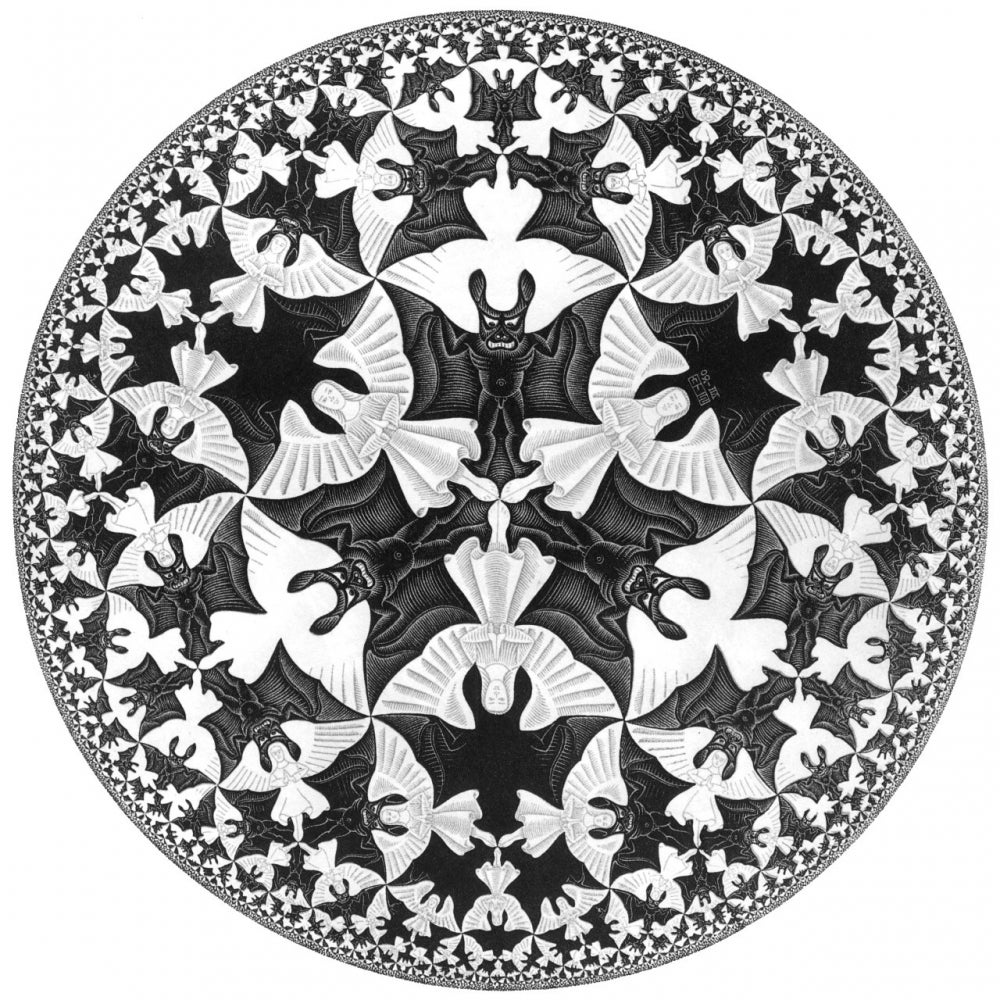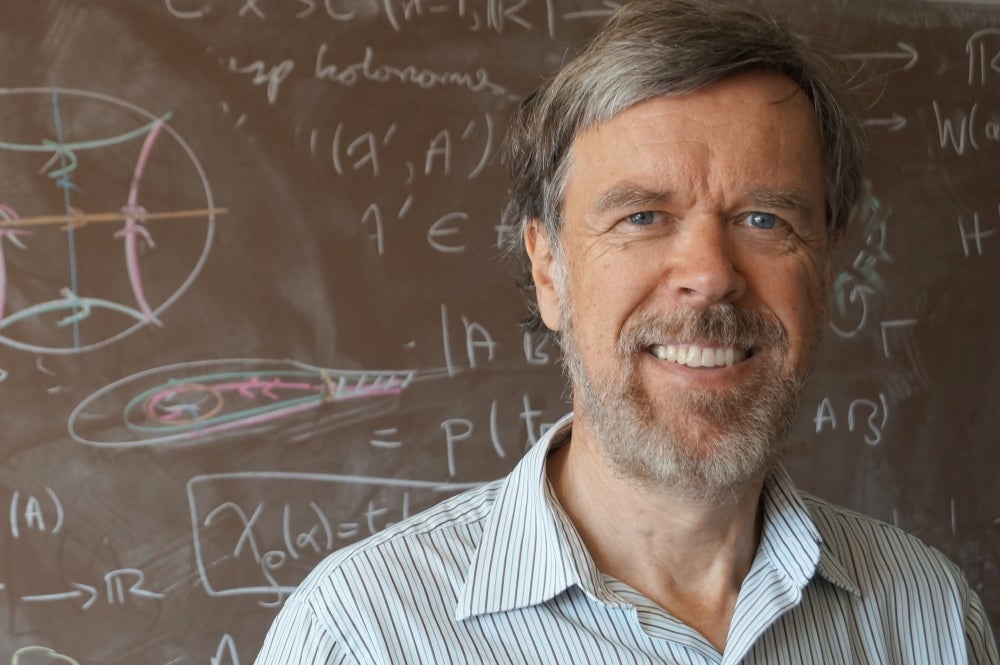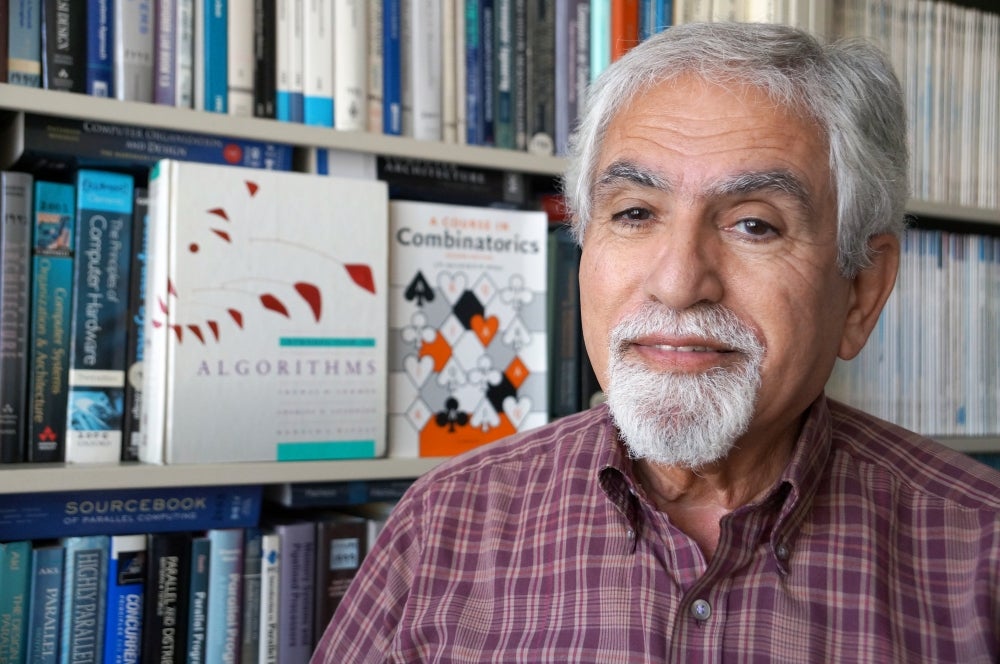
Cool Classes


In 1716, when playwright Christopher Bullock wrote, “Nothing is certain except for death and taxes,” he could have included pure mathematics in the list of life’s sure bets.
So says UC Santa Barbara mathematics professor Daryl Cooper, who argues that pure mathematics is universal, eternal and absolute. His unique freshman seminar, “The Beauty of Mathematics,” spends 10 weeks exploring the field’s curious nature.
“It’s a math appreciation class,” Cooper said. “There are a lot of really cool things in mathematics that you can appreciate without being a mathematician.
Cooper’s one-unit class is among 100 freshman seminars covering a wide range of subjects being offered this academic year. The courses are intentionally small — they top out at 20 students — to foster investigation and discussion. The limited size facilitates student-faculty contact; the pass-no pass format allows students to explore subjects outside of their majors without affecting their grade-point averages.
“Freshman seminars provide an ideal opportunity for students to learn about a subject of interest and to make great connections with UCSB faculty,” said Co-Interim Dean of Undergraduate Education Linda Adler-Kassner. “Through that exploration, they can begin understanding how faculty in different disciplines understand the worlds around them. They’re a great way to explore the ideas and opportunities that UCSB has to offer.”
Cooper’s course is a case in point. Despite the title, the course is absolutely accessible for nonmath majors. “I love going to classical music concerts but I can’t read music, can’t play an instrument; I can’t even sing, yet I get a lot of enjoyment out of music,” he said. “In a similar way, students can get enjoyment out of the ideas in mathematics, which is what this seminar is about.”
To illustrate non-Euclidian geometry — the mathematics Albert Einstein used to describe the curvature of space and time — Cooper refers to a famous piece of art by M.C. Escher, “Angels and Demons.” In the picture, both figures seem to get continually smaller as they move toward the edge of the circle.
“But that’s an optical illusion. In their universe they are all the same size; the picture distorts this reality,” Cooper explained. “The number increases exponentially as you move outward, unlike in normal geometry, where the number only increases quadratically; if you make a normal circle three times bigger, the area is nine times as much. But in hyperbolic geometry, when you make a large circle three times bigger, you get billions times more area.”
The seminar menu in the humanities includes three freshman seminars on Greek and Roman culture. “Greek Archeology in Action” brings participants face-to-face with artifacts in museums, including the Getty Villa in Malibu, and helps them understand the cultural contexts. “Ancient Ideas for Modern Times” explores how Greek and Roman civilizations have influenced the way we think about the world today. “HBO’s ‘Rome’ and the Fall of the Roman Republic” examines choices made by the series’ historical experts, scriptwriters and creators in bringing ancient Rome to the screen, while weighing whether popular entertainment can be historically respectable.
Another freshman seminar, “Puzzling Problems in Science and Technology,” grew out of a computer engineering required course that illuminates the work of engineers. The course uses familiar mathematical and logical puzzles to describe engineering problems and solution methods to freshmen, who may not yet have the background to understand them.
Taught by Behrooz Parhami, a professor in the Department of Electrical and Computer Engineering, the seminar focuses on the puzzle-like aspects of engineering challenges and their corresponding real-life applications. “An engineer is presented with pieces of a problem and has to put them together while taking into account user requirements in terms of performance and functionality, as well as technological capabilities and limitations,” Parhami said.
To illustrate the concept Parhami’s first lecture, about predicting the future, uses puzzles from some standardized aptitude tests. “When you’re given a sequence of numbers and asked what comes next, that is the same basic problem that engineers face in technology forecasting and inventory management,” he explained. “You have a past trend up to this moment and then need to know what comes next.”
A similar puzzle involves diagrams containing circles, squares, triangles or combinations thereof, plus five choices for what comes next. The solution can be found by detecting patterns to determine which subsequent choice fits best. Netflix and Amazon use a similar process when making recommendations based on what a user has chosen and liked in the past.
“I want students to become excited about what people do in science and engineering if they aren’t already,” Parhami said. “I want them to see that important problems are being addressed and that these problems will affect their lives, maybe not in an immediate way in the next few years but eventually.”



